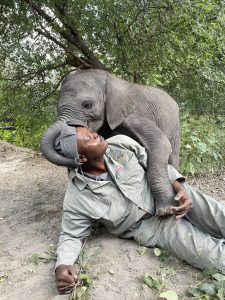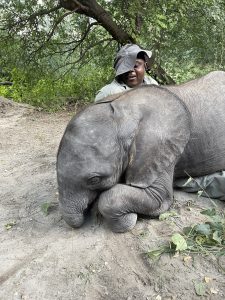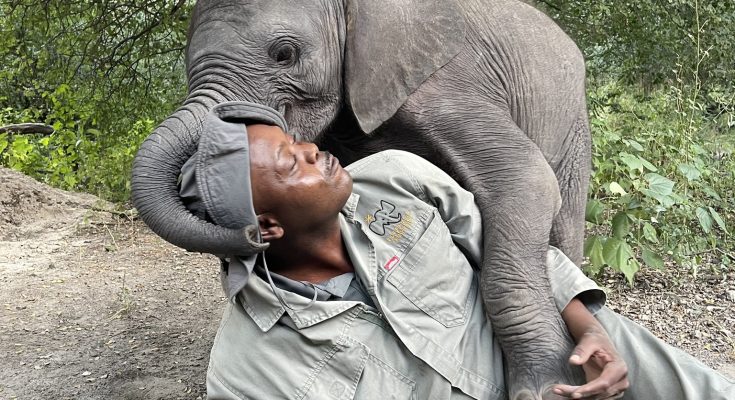Some photographs tell an entire story without a single word. One unforgettable image, taken under the soft shade of trees, shows a tiny elephant calf pressing her trunk gently against the man resting in the dust beside her. The calf is named Joy. The man is KT. And the bond between them captures everything the wildlife sanctuary Elephant Havens stands for—hope, healing, and second chances.
Joy’s life began not with safety and comfort, but with loss. Like many orphaned elephants, she arrived at Elephant Havens after enduring trauma no baby should experience. Elephants are social animals who form deep lifelong bonds with their mothers and herds. Losing that family shatters their world.
Yet Elephant Havens exists for calves like Joy—those orphaned through human conflict, poaching, or accidents. The sanctuary doesn’t just provide food and shelter; it offers love, patience, and a chance to heal.
One of the first people Joy met was KT, a devoted caretaker who has dedicated his life to nurturing the smallest and most vulnerable members of the herd. KT’s days are long and demanding, but for him, looking after orphaned calves is more than a job—it’s a calling.

From bottle-feeding at dawn to walking miles through the bush as the young elephants learn to forage, KT is always by their side. He comforts them when they wake in the night, anxious and alone, teaching them to trust again and rediscover their playful spirit.
Over time, Joy stopped seeing KT as a stranger. Elephants recognize kindness and remember who protects them. For Joy, KT became family.
In the now-famous photograph, Joy climbs onto KT, wrapping her small trunk around him the way a child hugs a parent. There’s no fear—only affection. KT lies back in the dust, smiling faintly, calm and unbothered by her weight.
For Joy, this cuddle is more than play. Elephants use their trunks to explore, comfort, and express emotion. By holding KT close, she’s saying what words can’t: You’re safe. I’m safe. We belong to each other.
This is the heart of Elephant Havens. The calves here aren’t simply rescued; they’re raised with compassion. Every bottle, every hug, every whispered reassurance becomes part of their healing journey.
The staff combine the science of survival—nutrition, veterinary care, and habitat protection—with the soul of survival—connection and trust. Without that bond, no calf can truly thrive.

Today, Joy is living proof of what compassion can do. Once a trembling orphan, she now runs, plays, and cuddles with the confidence of an elephant who knows she is loved.
Moments like these remind us that conservation is about more than numbers or statistics. It’s about relationships—between elephants and their herds, between humans and the animals we share this planet with. When you see Joy and KT together, you don’t see an orphan and her caretaker. You see a family.
And isn’t that what we all long for? To belong. To be cared for. To know someone will show up for us, again and again.
Visitors and supporters of Elephant Havens witness this powerful lesson firsthand: kindness can transform stories of loss into stories of hope. Each act of compassion counts. Each bond formed changes lives—not just for the elephants, but for the people who care for them too.



